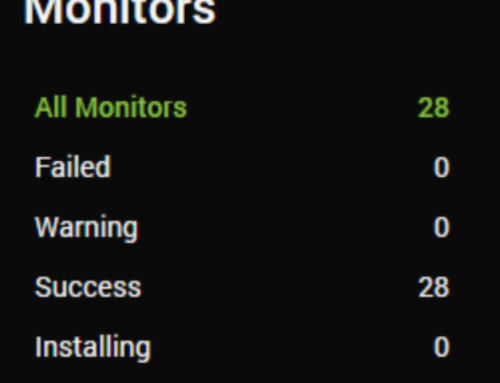This is not going to be your typical post. This question is asked often and people are quick to jump to the technical detail. The technical is another blog post I’ll be doing in the next few months, but for now what I want to focus on are the largely non-technical elements. What I hope to impart here are the lessons I’ve learned from listening, consulting, implementing, observing, and participating in the MSP ecosystem over the last number of years.
We moved a lot of our technology stack in 2016 (PSA/RMM/Documentation) and my list of requirements from back then is far different to the things I know to look out for now.
Private Equity = Deep Investigation
Where there is a Private Equity firm involved, further investigation is required as to the nature of ownership and who has the controlling majority. There is a lot of noise and visibility on Private Equity being a bad thing in the MSP space, and while that is certainly true in some cases what it means for this post is to suggest that you really need to investigate the circumstances surrounding each case individually and then make an informed decision. Look for things like changes in the CEO or the wider leadership team following a PE acquisition, especially if the company had a good product and reputation before PE. channele2e.com is a great resource for searching back through time to look at the history of companies in this space.
Track the Talent
Look into the churn rate of people at these companies, especially at the higher levels. Are they buying other companies and then the talent is fleeing to other companies? Immediate red flag. Do people only seem to last a year or two in key positions? Red flag.
Review Enhancement Requests
How quick are the company to respond to popular requests from their clients? Do they even have a well-executed, well-delivered idea/suggestion portal? For any company you are considering, go and find an existing partner and have them give you the enhancement requests by the number of votes, and determine the age of those requests. Look back through previous release notes and ensure the releases have a good cadence. If the top requests are 7-10 years old, that’s just not a red flag, it’s a flag that’s on fire as well.
Look for a public roadmap and review it
This is something that should outline a clear direction of where the product wants to be, but it should also represent the changes that have been already implemented into the product too. Look for clear innovation that you look at and say, “That makes sense and applies to my business”. Maturity of the roadmap/enhancement requests is important too, and until recently it was not something I’d considered. I had a really interesting discussion with Ashley Cooper, Director of Partner Experience Operations at Gradient where we talked about the importance of having users prioritise their Roadmap suggestions by applying a sliding scale weighting to each item. This I believe shows a more advanced thinking on how to approach dealing with this and certainly will yield better intelligence than a simple up/down type vote.
Look for a vulnerability disclosure program that is well funded
The types of products we are referring to here are holding the proverbial keys to the kingdom. These tools ARE being probed by criminals and even nation states. They should have a vulnerability disclosure program, it should be easy to access, and it should reward decent sums of money to those who find, especially critical, vulnerabilities. This is a good time to research past security vulnerabilities, and specifically how the company handled them. Were they upfront and honest? Did they even drive forward the changes needed? Did the company rebrand following a major security event? Vendors who have those “keys to the kingdom” products like RMM, or anything with an agent like AV should be held to the absolute highest standards.
Sit in the communities, observe, and ask partners about their experiences
No product is perfect, but you can get a real feel for how well a product/company is doing by just sitting and observing discussions about them in public spaces in places like Reddit, Slack, Discord, Facebook Groups and LinkedIn. Also evaluate the community ecosystem that exists around that product. Are partners helping with innovative content that supplements the product (some great examples of this are Kelvin Tegelaar’s input in to the Datto ComStore and Luke Whitelock’s input in to HaloPSA and Hudu.
External Consulting and Integrations
Pop into Google, and search for “product name consulting” and count how many companies exist purely just to provide consulting for that company. The higher this number is, the more likely it is the product has gaps in its functionality, is potentially unintuitive and difficult to use, or both and more. Don’t expect products like this to work exactly how you want out of the box. They will require input and time to get them to where you need. Looking at HOW they treat other companies who interface with or extend their product is also an interesting experience. How easy is it for other companies to integrate and interact with their product? Are they charging massive amounts for people to be integrated in their ecosystem?
Assess their input and involvement in things that don’t directly benefit them
Do their leadership team get involved in things that don’t directly benefit their company? Do they support (financially or technically) open-source products? Do they frequently run helpful webinars where it’s more about the content and less about pushing their product? It’s no coincidence that I would happily purchase the product(s) or services of any of the companies that are currently sponsoring the CIPP project. https://github.com/KelvinTegelaar/CIPP. This kind of thing can tell you a lot about how a company really runs and what its ultimate goals or motivations are. Are they in it for the $? Are they in it because they want to improve the industry and raise everyone up?
Review support arrangements to ensure they are effective and have good regional presence
Can you even ring them if you have an emergency? Is this number easy to find? Has all support been outsourced to countries that generally have lower wages and poorer execution of support? Red flag. Ask any vendor where their support is located and how many people are there providing support. A good, larger company has support resources spread worldwide in the countries that their clients are in. Ideally, that support resource is in the country you are resident in. Now’s a good time to look at their status page. Is it open to the public and hosted on an independent system? Is it updated quickly when there is a problem? Does it contain information and statistics from previous events? Do the company have reasonable root cause analysis published for the downtime?
Honest Communication and Legal Eagles
Are staff empowered to communicate honestly and openly or do their statements look like they’ve been issued by a PR/Legal team? Review their public facing communication and see if you can gauge if there is someone who cares behind it. Pay close attention to the terms that are in the contract. Does it allow them to lock you into a huge term unnecessarily? Even worse, does it allow them to lock you into a three year term automatically after a single year term? Is there a ridiculous notice period? Long contracts are not necessarily a bad thing, the bigger and more complex a product the more need there is for a vendor to have a long contract period. It allows them to forecast growth and future requirements for their business; but you absolutely should have something in place that allows you to exit the contract if the vendor does not hold up their side of the service. Dave Sobel has talked in the past about how in order to facilitate real change in these companies looking at how and what they compensate for when their services don’t work properly is a great thing to look at to determine if the company put their money where their mouth us.
It has to work for Vendors too
Being an MSP vendor is hard work too. As an MSP it is easy to be needy with tonnes of requirements while wanting a product or service to be priced competitively. I touched on Private Equity before, but this is more focussed on companies where PE own the majority of a company. It’s absolutely normal for companies in the MSP space to be funded by venture capital and growth equity. The pivoting point, I think, is when PE take a majority ownership. I’d love to see (and I will spearhead an initiative from now myself) to stop focussing on the bad vendors, and start celebrating the ones that are doing it right. There’s not many of them, but they are there.
The year of change
In my post about a year ago RMM providers – it’s time to pivot, or your product will die I talked about a bloodbath in the RMM sector. That bloodbath has now started. More people than I have ever seen are currently in the process of evaluating, shifting or have already shifted their RMM, PSA and Documentation tools. Companies who have taken their hands ‘off the rudder’ for years and are carrying fifty thousand tonnes of legacy tech debt are going to have a lot of difficulty in the next couple of years.




Leave A Comment